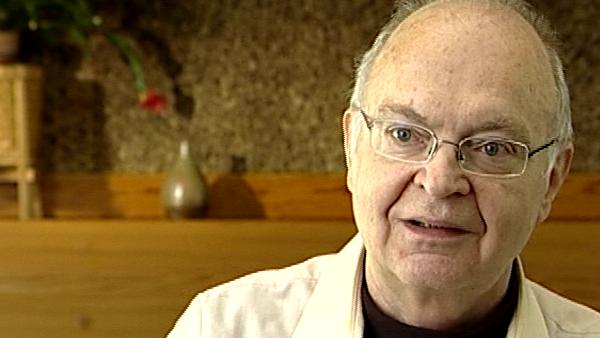NEXT STORY

My love of writing and a lucky life
RELATED STORIES

NEXT STORY

My love of writing and a lucky life
RELATED STORIES


|
Views | Duration | |
|---|---|---|---|
| 81. Updating Volumes One to Three of The Art of Computer... | 906 | 06:15 | |
| 82. Getting started on Volume Four of The Art of Computer... | 999 | 04:50 | |
| 83. Two final major research projects | 1113 | 03:55 | |
| 84. My love of writing and a lucky life | 1046 | 04:22 | |
| 85. Coping with cancer | 2 | 1946 | 07:40 |
| 86. Honorary doctorates | 746 | 02:29 | |
| 87. The importance of awards and the Kyoto Prize | 808 | 05:49 | |
| 88. Pipe organ music is one of the great pleasures of life | 1115 | 04:52 | |
| 89. The pipe organ in my living room | 828 | 05:10 | |
| 90. Playing the organs | 716 | 03:25 |


Now I'm... I'm still able to do small research problems that... that I can solve in a day or so but... but I knew that... that I'd never be able to work on a major... major difficult problem, you know, as I'm working on The Art of Computer Programming, it's hard for me to give... to give that up. So I found myself working on two big projects, one of them at the end of the '80s and one at the beginning of the '90s, which were sort of monographs. This one... and the first one, a project called Axioms and Hulls where I... where I was studying interesting problems in geometry - in... in convex geometry - and I... I got to work on that while I was in Singapore getting the book, 3:16, printed. This turned out to be a little book of... of 100 and some pages. And... and then I... I started looking at... at the problem of random graphs, a... a very fascinating phenomenon where sort of a big bang occurs when... when you start out with... with points that are totally disconnected and then you... you choose two points at random and add a connection between them, and you keep doing this. And as... as soon as you pass the number of connections, about half of the number of points, suddenly almost everything almost always becomes connected, a large part of it becomes connected. This is called the 'giant component'. And I had been studying this problem with... with Boris Pittel, a... a visitor to my research project in the... at the end of the '80s and we... we got some preliminary results that seemed kind of exciting mathematically, and so I was writing up the paper and I realized that there were even more results around the corner, in fact, the more I looked at the problem yet another beautiful pattern seemed to emerge. So... so, as it turned out, it... it was... it was... it finally developed into... into not only was I studying the 'giant component' but we wrote a research paper which was a giant paper, it... it filled the entire issue of a journal. And I had... I had three co-authors, Boris Pittel, who I already mentioned and Svante Janson, Tomasz Luczac from Poland. We all kept finding more things about this subject and challenging each other to... to do yet another amazing step in the exploration of this phenomenon that was coming through. I... so, in a way it was like having written two more PhD theses at the... at the end of my research career, these two monographs, the one on Axioms and Hulls and the other one about the... the 'giant component'. And this was then my swan song, you know, to... after which I... I said, okay, now I've been there and done that and all the fun problems now I'll leave to other people if I can't solve them in a day. Or if... or I try to give myself an hour but if... and... but after an hour sometimes I think well, maybe another hour I'll be able to do it. So...so from now on I... if I think of a... a new problem and I can't see how to... how to solve it I will pass it on to... to somebody else and say, don't you think this is a cool thing and... and let them have the fun of... of solving it.
Born in 1938, American computing pioneer Donald Knuth is known for his greatly influential multi-volume work, 'The Art of Computer Programming', his novel 'Surreal Numbers', his invention of TeX and METAFONT electronic publishing tools and his quirky sense of humor.
Title: Two final major research projects
Listeners: Dikran Karagueuzian
Trained as a journalist, Dikran Karagueuzian is the director of CSLI Publications, publisher of seven books by Donald Knuth. He has known Knuth since the late seventies when Knuth was developing TeX and Metafont, the typesetting and type designing computer programs, respectively.
Tags: The Art of Computer Programming, Axioms and Hulls, Singapore, 3:16, Poland, Tomasz Łuczak, Boris Pittel, Svante Janson
Duration: 3 minutes, 56 seconds
Date story recorded: April 2006
Date story went live: 24 January 2008